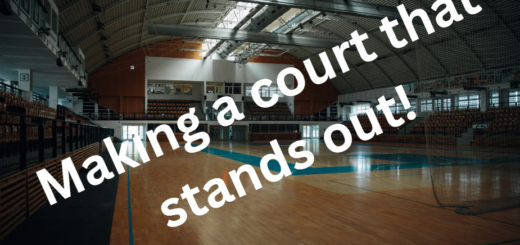What is a Lift in Volleyball?

Just like any other competitive sport, volleyball players also need to stick to the rules of the game during the play. In this regard, lift violation or as it is also known as carry or catch violation is one of the least talked about rules in volleyball.
What is a lift in volleyball? A lift is a violation when a player makes prolonged contact with the volleyball and tries to throw the ball instead of playing it naturally. There is no specific amount of time allowed for players to retain the ball before the referee calls for the lift, so they make subjective calls.
Lift Rule in the Volleyball Rulebook
Lift rules are clear: as a setter, you can only contact the ball momentarily before sending it back into the play.
The ball must not be caught and/or thrown. It can rebound in any direction.
FIVB Rulebook Section 9.3.3
Which Players Can Commit Lift Violations?
While all the players can commit lift violations, setters are most prone to do them. Let’s see the possibility of lift violation for each player.
Lift Violation by Attackers
Some attackers/spikers also have the tendency to commit the lift/carry violation. When the setter sets the ball for them, some attackers try to possess the ball momentarily instead of hitting the ball straight away. Unlike setters, attackers use only one hand to hit the ball, so they carry the ball in one hand, and then try to change its direction, which is considered as a lift violation in volleyball.
This violation is common when the attacker tries to perform tipping. While tipping is allowed legally, you cannot hold the ball during tipping, as it is considered as the lift violation.
This situation is described in the following words in the FIVB rules book
During an attack hit, tipping is permitted only if the ball is cleanly hit, and not caught or thrown.
FIVB Rulebook Section 13.1.2
Consider the following video as attackers use only one hand for hitting the ball, they are trying to carry and throw the ball.
Now see this video. In this clip, it can easily be seen that the attacker changed the direction of the ball after holding it momentarily.
Lift Violation by Diggers
Diggers can also be called for lifts, but they are most unlikely to commit this violation. As the game of volleyball has matured over the years, diggers are traditionally inclined to play the ball with closed fist or with their palm down. This means that they do not commit the lift violation.
For diggers, the speed of the incoming ball also makes lifting highly impossible. Attackers or spikers hit the ball with so much speed that diggers only try to avoid the ball from being touched on the ground. On the other hand, setters and attackers have relatively more time to hold/carry the ball which is counted as a lift violation.
But this does not mean that diggers cannot commit the lift violation. If you go with the untraditional way of digging (to dig the ball with palms up), you can still be called for lift (if the referee considers it a prolonged contact).
Lift Violation by Passers
Just like diggers, serve receivers are also unlikely to be called for lift, until they have the tendency to receive the serve with open palms. Usually, the serves are received using the forearms or closed fists so receivers are safe from this violation.
Lift Violation by Setters (Most Common)
Setters are most likely to commit the luft violation. This is due to the fact that setters receive the ball gently from the passers and they also have no need to attack the ball. This means that they are prone to hold or catch the ball for a prolonged amount of time that it gets called for the lift.
Some setters might try to set the ball perfectly for the attackers that they end up changing the direction of the ball by holding it momentarily. This is where they end up committing the violation. Likewise, some newbie setters who have not championed the game yet can have a tough time deciding where to set the ball perfectly for the attack, so they can also make prolonged contact with the ball.
If you are a setter, you need to work on your wrist movements to avoid the lifts as you can see in this short clip.
You will not be called for lift just because you set the ball below your chest. In Fact you can easily do it as long as you are not contacting the ball for a prolonged amount of time. So when you contact the ball above your chest height and lower your elbows to bring them below your chest, this is where you are committing the violation.
How to Avoid Lifts in Volleyball?
Many viewers and fans are unaware of the lifts rule, which makes them believe that setters can orchestrate the pass as per their will. But this is surely not the case. If you are a setter and found yourself violating the lifts rule, you should practice the following things to get better in the court.
Play the Volleyball With Closed Fists
You can try hitting the ball with closed fists to avoid lifts. It is virtually impossible to hold the ball with closed fists, so you are highly unlikely to commit the lift violation. However, depending upon the length of your fist contact with the ball, you can still be called for lift. So this position does not rule out your chances to be called for lift, you are just highly unlikely to commit the violation.
But you must keep in mind that this is a momentary solution, so you should only be doing that until you make a transition for setting the ball perfectly with open fists without the lift violation.
Always remember that you have minimal control over the ball when you play it with a closed fist, which means that you will not set the perfect ball for your attacker.

Hit the Volleyball With the Heels of your Hands
Hitting the ball with the heels of your hands is also one of the easiest ways to avoid lifts. Just like the closed fists, you cannot catch the ball with the heels of your hands, so the lift violation is highly unlikely (but not impossible). Once against heel strategy should also be used till you master in setting the ball using your palms.
Relax! You Will Get Better With Time
When you get mature at volleyball, you will avoid lifts unintentionally with the power of your subconscious mind and instincts. While playing the game, most players do not even avoid lifts intentionally. They just get so better at the game with time that they start setting the ball immediately. This is the reason why you will find more newcomers being called for lifts.
What Will Happen if Lift Rules Are Not Present
If lift is not declared a foul, it will give unfair advantage to some players who can use their elbows to spin the ball for their advantage. As lift violation is most common for setters, let’s talk about the undue advantage which setters get in the absence of lift/carry/catch rules.
If you look at the current lift rules, you will see that the setter can only set the ball from their wrists with a little bit of arm strength, so the use of elbows to set the ball is not allowed at all.
If carrying the ball is allowed, it will disrupt the whole momentum of the game. Let’s suppose that there are no lift rules. This way setters can carry the ball for long while other players on the court keep on waiting for them to set the ball.
The uncertainty in the setter behavior will rise.
In the absence of lift rules, setters can set the ball inorganically. This way setters can easily compensate for ineffective passers, who are unable to pass the ball very well to the setter.
Consider two different passers A (a good one) and B (a poor one). Setters who receive the ball from passer A will easily set the ball perfectly for attack with the help of their wrist. On the other hand, passer B will not pass the ball perfectly to the setter, and if the lift rules are not present, the second setter can still hold the ball and set it up for the perfect attack. This is surely an injustice for the passer A who does all the hard work to bring their game up.
When is Carry Not Considered a Lift Violation?
Lift is not called when two players (one from each team) carry the ball momentarily together above the net. This is due to the fact that when both players carry the ball together, the umpire can’t just accuse one player of violation. So, in this case, the play continues until the ball comes into the control of one team.
Final Thoughts
While you are playing volleyball, you have to stick with the rules of the game (and playing the game within the rules makes it competitive). Just like other volleyball rules, you also need to avoid carrying the ball to avoid giving extra scores to your opponents. As referees have the advantage of interpreting the lift rules, you need to be extra cautious to avoid “prolonged” contacts in the volleyball, so you are sure that you are safe from this violation.
Calling a player for lift or carrying or catching the ball is also considered as one of the difficult things to do being a referee. As there is no set amount of time for the lift violation, the referee should be ready to make a quick assessment for correct calls.

Ahmed is the founder of Ball and Net Sports, a platform where he writes about volleyball.
As a professional volleyball player who has participated in various national and international level volleyball competitions, he loves to teach other volleyball enthusiasts about the game.
He is now a professional volleyball coach who organizes volleyball camps and social events for talent hunting for top volleyball teams.
As a volleyball talent-hunting specialist, he loves to teach people how they can make their game better in the fast-paced volleyball environment where it is extremely difficult to get quality content free of cost.



